Celebrating 40 years of Yorkshire-built Case tractors
Posted by Chris Graham on 11th October 2023
Jonathan Whitlam celebrates 40 years of Case tractors; the black and white machines that were made in Yorkshire.
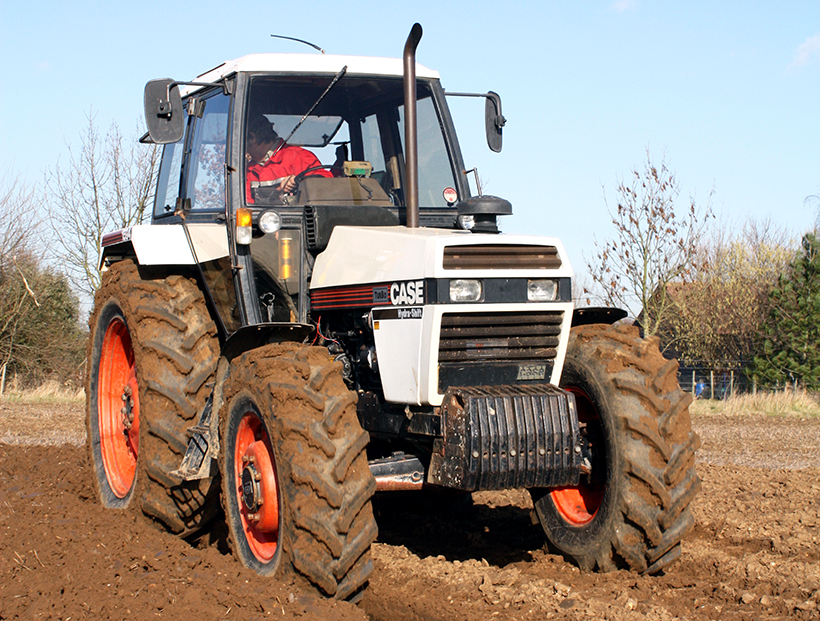
In 1983, the David Brown name disappeared from the bonnet, in favour of Case branding, with the launch of the new 94 Series tractors that were built at Meltham, in Yorkshire.
The David Brown company was famous for its gear manufacturing when it began building its first tractor in 1936, for Harry Ferguson. The Ferguson Type A was built at Meltham Mills, a factory set up in an old cotton mill not far from the David Brown company’s hub of business in the Yorkshire town of Huddersfield.
From 1939, David Brown began producing its own tractors, beginning with the VAK1, painted in a colour that would become synonymous with the brand for many years – Hunting Pink.
A slight change to Currant Red, followed by a drastic change to Chocolate Brown and Orchid White in the mid-1960s was followed by Tenneco’s acquisition of the tractor building-side of the David Brown business in 1972, which subsequently merged it with its JI Case farm equipment division.
Apart from a change of chassis colour to Power Red (orange), the David Brown tractors continued as before, with larger Case tractors gradually being introduced as part of the range, and a wider North American market now open to the Yorkshire manufacturer. However, 11 years after the merger, that would all change forever.
Major revamp
The David Brown tractor range that was being built at the time of the takeover remained in production after 1972, with the new Power Red skid unit and wheels, and white tinwork, with the addition of the small ‘CASE’ name on the sides of the bonnet, but the David Brown brand was still the most prominent.
The range throughout the 1970s included the futuristic Hydra-Shift models that gave an early form of power-shift transmission, and the original David Brown safety cabs were improved as the decade wore on, culminating in the use of much more satisfactory quiet versions and the use of a user-friendly cab sourced from Danish firm, Sekura.
With models ranging from the 48hp 885 up to the 91hp 1412, a concise range had been established by the company, but it was realised that improvements would be needed for the 1980s to keep up with the competition.
Most of the emphasis on an improved range was on a better cab than what had been offered previously, as well as more modern bonnet lines and larger, more powerful machines at the top end of the range. The result of these requirements would be the 90 Series, introduced in ’79.
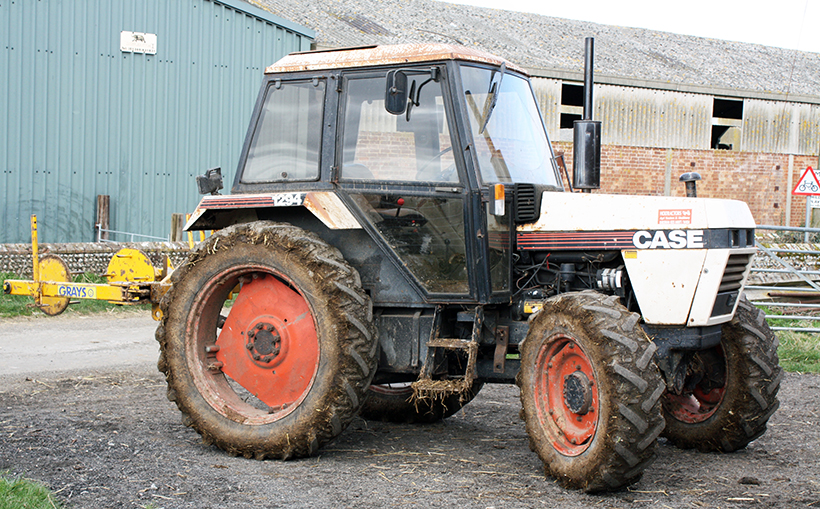
This 1294 has a front axle supplied by Carraro of Italy, which was basically the same unit as that fitted to the 90 Series tractors from 1982.
The 90 Series was not actually new at this point – the designation being used for new six-cylinder Case models first launched in the USA in 1977. The use of this numbering scheme on the Yorkshire-built range was a sign of the beginning of more unity between the North American Case range and the tractors produced in Britain.
The 90 Series certainly looked very different to earlier David Brown tractors, with the new bonnet sloping slightly towards the front, matched to the new Sekura cab, which gave much better visibility than previous cabs used by the firm, with a larger glass area and wide-opening doors, plus extra ventilation was easily obtainable thanks to an opening roof hatch and openable side widows, as well as a large opening rear screen.
Under the new skin though, most of the range used the trusted engines and other mechanical units that had been established on the previous David Brown tractors, including the Hydra-Shift transmission as an option on the larger two-wheel drive models.
The range comprised five models, starting with the three-cylinder 1190 and then moving on to the four-cylinder, 58hp 1290, 67hp 1390, and 83hp 1490, while the largest was the six-cylinder, 103hp 1690, this latter flagship being the company’s first foray into six-cylinder tractors since the 50D of the 1950s.
Thanks to the big Case tractors being built in Racine in North America, the 90 Series in the UK was extended with five models from 120-273hp, although these did not bare any relation to the Meltham-built David Brown models, except for the 90 Series numbering.
The David Brown 90 Series was all produced in either two- or four-wheel drive form, except for the little 1190, which was only ever produced as a two-wheel drive machine. David Brown had developed its own driven front axle for the range, but this was only used up to 1982, when it was switched out for a unit bought in from Carraro of Italy.
This was one of several improvements that were made to the 90 Series during its production run, with the 1690 receiving particular attention – including more power output.
Milestone range
The 90 Series had done well for the company, but had suffered from teething troubles, some of which had been sorted, but ultimately the decision would be taken to relaunch the 90 Series range, especially as a new tractor was planned to extend the number of models.
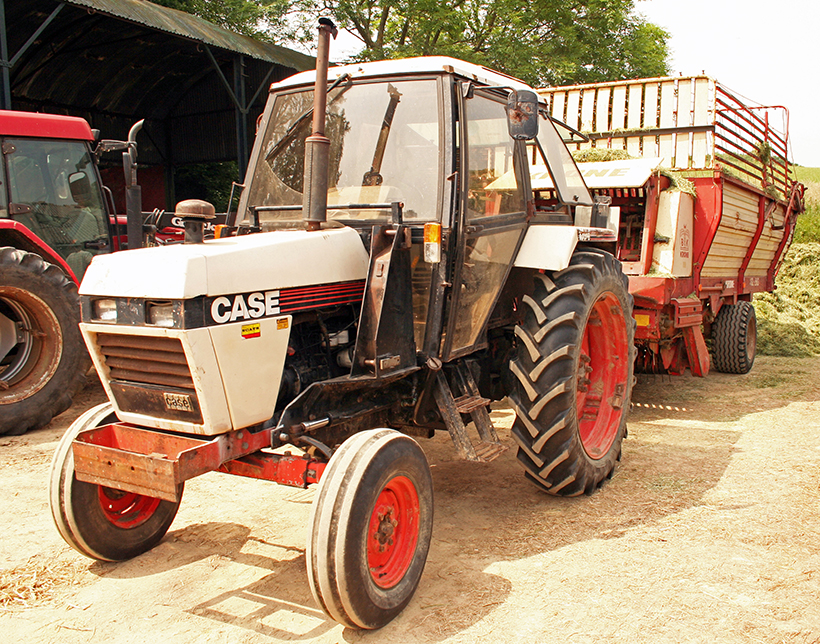
The 1394 was a 72hp tractor and one of the best sellers in the range. The two-wheel drive versions offered good value for money and were often chosen by farmers because of their exceptional manoeuvrability.
So, in 1983, the new 94 Series was launched. However, the new range, although based on the old 90 Series, looked very different and with it came the loss of the famous David Brown name. For the first time the Case name was the prominent brand and instead of a small ‘CASE’ nameplate on the bottom of the radiator grille, as on the 90 Series, now things were very different – with the Case name proudly displayed on the bonnet sides.
In contrast, the David Brown name was nowhere to be seen. After 11 years of being part of the Tenneco empire, and thus part of the JI Case organisation, David Brown tractors had ceased to exist. They may still have been built in the same facilities at Meltham Mills, and by largely the same workforce, but from now on the product was emphatically a Case-branded one.
The new 94 Series retained the same bonnet design as its predecessors, and the Sekura cab, but the colour had changed. White remained as the main livery, but the Power Red skid unit had been replaced by black, which made the tractors stand out dramatically from what had gone before.

There were now six models, instead of the original five of the 90 Series, and most of them had also been changed in some form or other, except for the little 1194 that was only different to the 1190 in terms of colour and branding and, as before, this three-cylinder 48hp tractor was only produced in two-wheel drive format.
In contrast, the next model up, the 1294, now had an increase of three horsepower to make this four-cylinder machine a 61hp tractor, while the 1394 gained more, with its 72hp output being five horsepower more than the 1390 it replaced, thanks to the fitting of a turbocharger.
The 1494 retained the 83hp figure that was held by its predecessor, while the 1694 had slightly more power with a 108hp rating, making it a large machine for the time and a true flagship to the new range. Another model was introduced at the same time, that had no predecessors. This was the 1594 – a six-cylinder model producing 95hp.
Development work had led to the possibility of the 94 Series being offered with the Hydra-Shift transmission on both two- and four-wheel drive tractors. Previously, it is said, the technology used had prevented four-wheel drive tractors being fitted with the advanced gearbox system.
A creeper box was also now available for the 1394 and 1494, and the 94 Series range was completed by the 1294, 1394, and 1494 being offered as high-clearance models for row-crop work – a feature that had also been offered on the earlier 90 Series versions.

A Case 1694 bales hay with a Krone KR120 round baler, its generous ground clearance proving ideal for straddling the swath of grass. The Sekura-sourced cab was certainly a very light and spacious environment in which to spend a working day and was one of the highlights of the 94 Series.
Big changes
The 1980s continued to be a difficult time for farm machinery manufacturers, with decreasing sales. This led to one of the biggest shake-ups in the agricultural world when it was announced that the owner of JI Case, Tenneco, was to buy International Harvester’s agricultural division. The new Case IH company would see the Case and International Harvester lines of tractors merged into one single range and, in 1985, the white and black Case 94 Series metamorphosed into the new Case IH 94 Series, with a new red and black colour scheme.
Despite the new branding, the 94 Series remained much as before, although soon both the 1194 and 1294 models would be dropped in favour of IH models built in the Doncaster factory, also situated in Yorkshire, this being the first signs of a rationalisation of the models produced by the two once separate companies.
The 94 Series carried on, complete with its much larger Racine-built sisters, right up to 1988 when the factory at Meltham Mills was finally closed and the story of David Brown tractors reached its end.
It was perhaps not a surprise that the Doncaster factory would survive out of the two, as it was a much more modern facility compared to the rather cramped and archaic conditions at Meltham, which was, after all, originally a cotton mill and was always working within a confined area.
It was sad though that not only the David Brown legacy, but also that of the successful 94 Series, was lost when Meltham Mills closed in ’88.
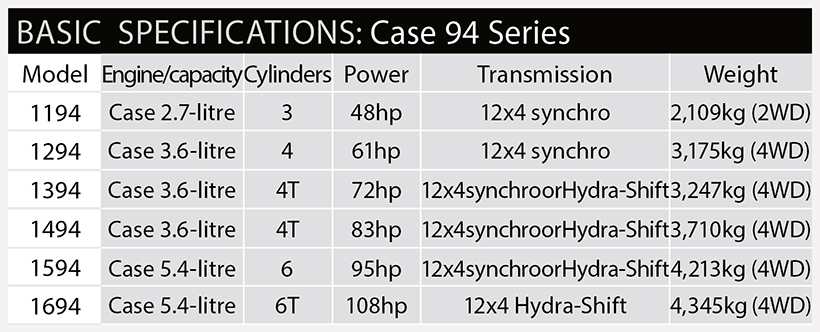
The legacy
In 1990 Case IH announced a new range of models that ultimately replaced the larger Meltham-built 94 Series. The four- and six-cylinder line of tractors, built in the former IH plant in Neuss-on-Rhine, Germany, was called Maxxum.
On the face of it these shiny new tractors looked completely different from anything that had gone before, with their stylish good looks and modern features, including a semi-powershift transmission. Look a bit closer though and you can see signs of what they were based on, and that turns out to be the 94 Series.
Although fitted with Cummins engines, the transmission was an updated Hydra-Shift and the cab, underneath the bigger roof and cosmetic dressing, was a unit supplied by Sekura based on that used on the 90 and 94 Series. In fact, the preliminary design work on the project that was to later become the Maxxum was undertaken at Meltham with a view to replace the 94 Series. So, in a way, the 94 Series lived on well into the 1990s in the shape of its Maxxum descendant.
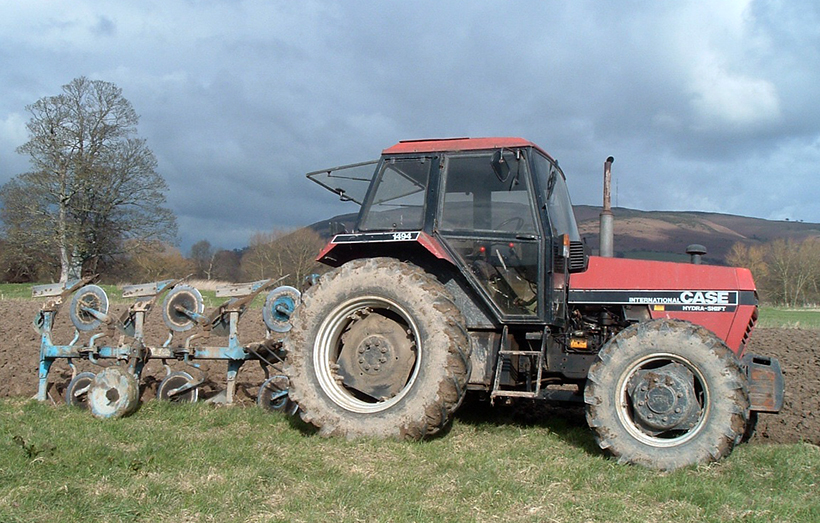
After the merger with International Harvester, the 94 Series adopted a red and black livery that was created with the formation of Case IH. (Pic: Emyr Hughes)
Then of course, there are the many Case 94 and Case IH 94 Series tractors still at work on farms and in enthusiasts’ collections. It may have now been 40 years since the original 94 Series was introduced back in 1983, but the range was a landmark in more ways than the demise of the David Brown name.
It went on to become a very successful product, survived one of the largest mergers of the decade, and was ultimately the basis for a very successful line of models that was produced in Germany up to 1997.
Affectionately known by many people as the ‘Magpie’ range, thanks to its distinctive black and white colouration, the original Case 94 Series remains as one of the best produced at Meltham Mills. It was the result of four years of field experience with the 90 Series and included many improvements following that experience.
To David Brown fans it represents the sad loss of that manufacturer’s name from the side of tractor bonnets, but it also retained all that was best of the David Brown firm, producing reliable, sophisticated, and dependable tractors for farming the world over.
This feature comes from the latest issue of Tractor & Machinery, and you can get a money-saving subscription to this magazine simply by clicking HERE

Previous Post
Unique 1928 Scammell S10 artic finds new home

Next Post
Celebrating Marshall’s 175th anniversary in style!



